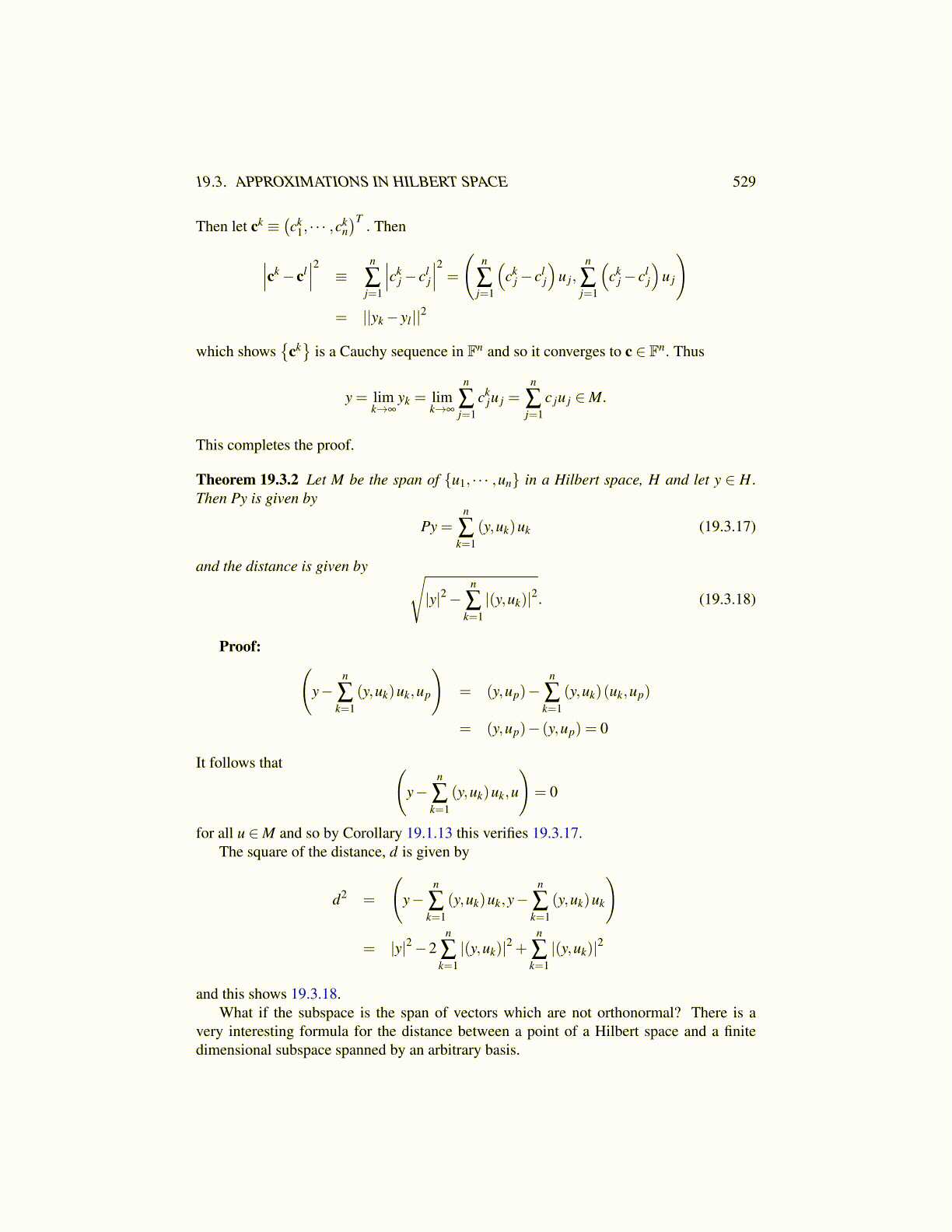
19.3. APPROXIMATIONS IN HILBERT SPACE 529
Then let ck ≡(ck
1, · · · ,ckn)T
. Then
∣∣∣ck− cl∣∣∣2 ≡
n
∑j=1
∣∣∣ckj− cl
j
∣∣∣2 =( n
∑j=1
(ck
j− clj
)u j,
n
∑j=1
(ck
j− clj
)u j
)= ||yk− yl ||2
which shows{
ck}
is a Cauchy sequence in Fn and so it converges to c ∈ Fn. Thus
y = limk→∞
yk = limk→∞
n
∑j=1
ckju j =
n
∑j=1
c ju j ∈M.
This completes the proof.
Theorem 19.3.2 Let M be the span of {u1, · · · ,un} in a Hilbert space, H and let y ∈ H.Then Py is given by
Py =n
∑k=1
(y,uk)uk (19.3.17)
and the distance is given by √|y|2−
n
∑k=1|(y,uk)|2. (19.3.18)
Proof: (y−
n
∑k=1
(y,uk)uk,up
)= (y,up)−
n
∑k=1
(y,uk)(uk,up)
= (y,up)− (y,up) = 0
It follows that (y−
n
∑k=1
(y,uk)uk,u
)= 0
for all u ∈M and so by Corollary 19.1.13 this verifies 19.3.17.The square of the distance, d is given by
d2 =
(y−
n
∑k=1
(y,uk)uk,y−n
∑k=1
(y,uk)uk
)
= |y|2−2n
∑k=1|(y,uk)|2 +
n
∑k=1|(y,uk)|2
and this shows 19.3.18.What if the subspace is the span of vectors which are not orthonormal? There is a
very interesting formula for the distance between a point of a Hilbert space and a finitedimensional subspace spanned by an arbitrary basis.